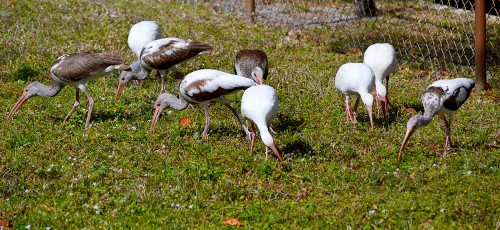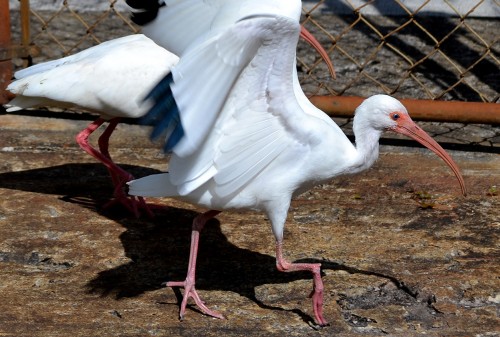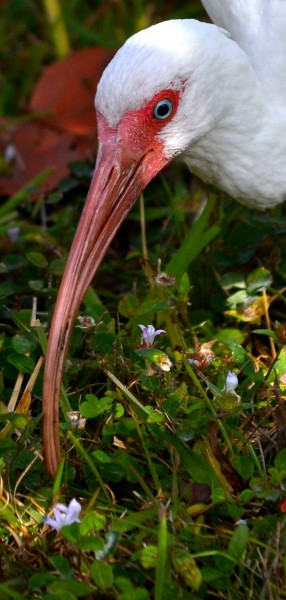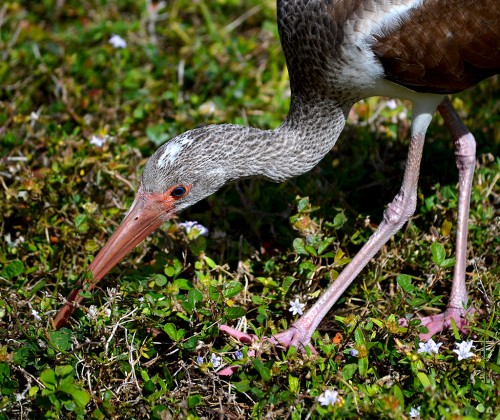 One of the first things I did when I woke up this morning was to check the weather in Cape to see how much snow had fallen. Mother said she was up most of the night. “I’d go to sleep for a couple of hours, then wake up and sit at the window watching the big flakes swirl down.”
One of the first things I did when I woke up this morning was to check the weather in Cape to see how much snow had fallen. Mother said she was up most of the night. “I’d go to sleep for a couple of hours, then wake up and sit at the window watching the big flakes swirl down.”
I spent some time listening over the Internet to the Cape cops and the Missouri Highway Patrol. Sounded like a lot of folks didn’t heed the advice to stay off the road. It must have been a good day to own a wrecker company (and a bad day to be a wrecker truck driver).
“Look in the front yard. NOW!”
 While my mind was focused on cold and snow, Wife Lila headed out the door to walk on the beach. A few minutes after I heard the door slam, I got a text message: “Look in the front yard. NOW!”
While my mind was focused on cold and snow, Wife Lila headed out the door to walk on the beach. A few minutes after I heard the door slam, I got a text message: “Look in the front yard. NOW!”
That’s usually not a good message. Still, I hurried to look out the window.
Holy Cow! The front yard is covered in white. Drifting white. Drifting white with feet and beaks.
It’s an ibis invasion
 It was an invasion of American White Ibis. They are common in South Florida, but we don’t usually get them in our yard. They prefer wetlands where they can feed on small fish, crayfish and aquatic insects.
It was an invasion of American White Ibis. They are common in South Florida, but we don’t usually get them in our yard. They prefer wetlands where they can feed on small fish, crayfish and aquatic insects.
I kept looking to see what they were eating out of our yard, but I couldn’t tell. Several sites I checked said they are “tactile, not visual feeders,” which means they swish their bill around until it hits something worth consuming. They moved across the yard in a hurry, so we must not have been a good cafe.
They sound like spring breakers
A Wikipedia entry reported that “a field study late in the Florida nesting season revealed that on an average day, adult American white ibis spent 10.25 hours looking for food, 0.75 hours flying, 13 hours resting, roosting, and attending to their nests. Much of the time roosting is spent preening, biting and working their feathers with their long bills, as well as rubbing the oil glands on the sides of their heads on back plumage. American white ibis generally only preen themselves, not engaging in allopreening unless part of courtship behavior. Bathing often takes place before preening; ibis squat in water 2–7.9 in) deep and flick water over themselves with each wing in succession. Hundreds of birds may bathe together around the time of courtship.”
Dark ones are youngsters
 You might have noticed some dark and some mottled birds in the group.
You might have noticed some dark and some mottled birds in the group.
The story above mentioned “The gray to sandy gray brown juvenile plumage appears between weeks two and six, and face and bill become pink a few weeks later, while the legs remain gray. The irises have turned slate-gray by this stage. Once fledged, the juvenile American white ibis has largely brown plumage and only the rump, underwing and underparts are white. The legs become light orange. As it matures, white feathers begin appearing on the back and it undergoes a gradual molt to obtain the white adult plumage. This is mostly complete by the end of the second year, although some brown feathers persist on the head and neck until the end of the third year. Juvenile birds take around two years to reach adult size and weight.”
Well, at least I didn’t have to shovel the white stuff drifting in MY front yard.
